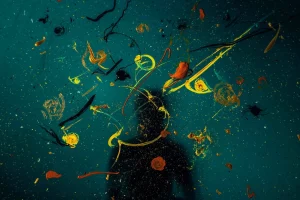Silver photos, digital advances or programmed obsolescence: what impact does photography have on the environment? For all those who, like us, are wondering what impact a photo can have on the environment, here is an article on the history of the environmental impact of our photos. Our ambition: become eco-responsible photographer.

Argentic, a polluting but innovative object
1839 marked the beginning of the first silver cameras. They already had a name borrowed from the vocabulary of chemistry, referring to the tiny aggregates of silver that make up the images produced by this process. Let’s take a look at its components and their environmental impact.
Although they are durable and reusable, silver cameras are composed of many polluting materials.
But which of these components pollute the most?
The number one pollutant is the vital component: silver film. In order to receive colors and black and white, the silver film is composed of highly polluting materials: plastic (cellulose triacetate) and silver halide (based on chlorine or bromide; a bromide is most often used). These essential elements are very harmful to the planet.
The second major pollutant is, of course, the chemistry used to develop the films. This includes the use of chemical developers (hydroquinone) and fixers (sodium thiosulphate). These products cause waste that is toxic to nature, and end up in wastewater and the environment.
Democratization of printed photos
Did you know that before silver films, photographs were printed on fine glass plates? These two impractical and time-consuming processes were later replaced by Plan film and Roll film in 1925. A few years later, in 1935, color made its appearance and became widespread in the 1950s.
With the advance of consumer cameras in 1948, Edwin H. Land decided to develop a process that would allow him to print his photos instantly. The images were developed on special polarizing films, which were based on a polymer film stretched with diffuse iodine. Named Polaroid, this concept marked the beginning of the democratization of consumer photography and mass printing.

On the consumer camera front, the 1980s saw the birth of disposable or “ready-to-photograph” cameras. Their films had to be flexible and resistant at the same time, with a low coefficient of elongation, good resistance to aging and perfect compatibility with emulsion. But here again, in order to meet these technical requirements, the films were designed with chemicals and pollutants. Just as with silver prints, cellulose triacetate and polyester are included in the list of ingredients.
The processes used in these heyday years for photography have had a huge impact on the environment. The mass of paper used was significant; with the ease of printing, even failed photos were printed and the paper used was treated with chemicals. In addition, the plastic housings made of many hazardous materials were not recyclable. At that time, the concept of ecology was far removed from that of today.

The great illusion of “greener” digital technology
With the arrival of the Cloud, in the early 2000s, the purchase of digital cameras skyrocketed. Thinking that the Cloud was an immaterial cloud and that our photos were dematerialized, the storage of photos increased incredibly. However, the reality is quite different.
Photography and harmful materials
Indeed, a lot of natural resources and harmful materials are used to make our cameras. The electronic chips that make powerful cameras are made from arsenic. Gold, platinum, copper and aluminium are also found in our cameras, while lithium-ion and nickel-cadmium power the batteries. These substances are far from being recyclable, and their extraction endangers the planet.
The problem of programmed obsolescence is also a negative point: according to some figures, an SLR camera has a lifespan of only 5 years.
Storage
Image storage is also a problem. Storing thousands of photos in an online cloud, on hard disks or memory cards increases the carbon footprint of a company or individual. The massive production of memory hardware and the consumption of electricity for data centers has a huge ecological impact. According to the Veritas study, about 6.4 million tons of carbon dioxide was unnecessarily released into the atmosphere in 2020 due to unused or forgotten data (photos and videos). This would be the equivalent of driving around the world 575,000 times.

Return to print
After the peak in digital photos, we are now seeing a return to print trends with easy access via web ordering. These prints are made on paper and all types of media and objects. CEWE for example, was on the market long before the digital age, installed its first printing terminal in 1997. Over time, the brand developed its market on the web, and in 2019 it reached its 60 millionth photo book.
Some tips on how to become an eco-responsible photographer
It is difficult to say which of the two photographic methods—silver or digital—pollutes the most. Beyond the debate about which of the two pollutes the most, it is advisable to carefully consider each one: review its defects and look for ways to improve it.
On the side of the professional or amateur photographer, the levers of action go through the awareness of the environmental impact we have when we invest in a camera and when we take pictures (sometimes in very large numbers). Trying to reduce this impact by replacing your camera as seldom as possible, favouring more respectful processes such as using less chemical products for development, taking fewer photos and making the effort to eliminate those that are not of interest…are a few avenues for action.
At Cyme we want to think about ways to combine photography and ecology.
And you? What are your avenues for improvement?
Tell us about it !
Photo Credits: Reno Laithienne, Toa Heftiba, Ian Dooley, Ivan Bandura and Jon Tyson.










